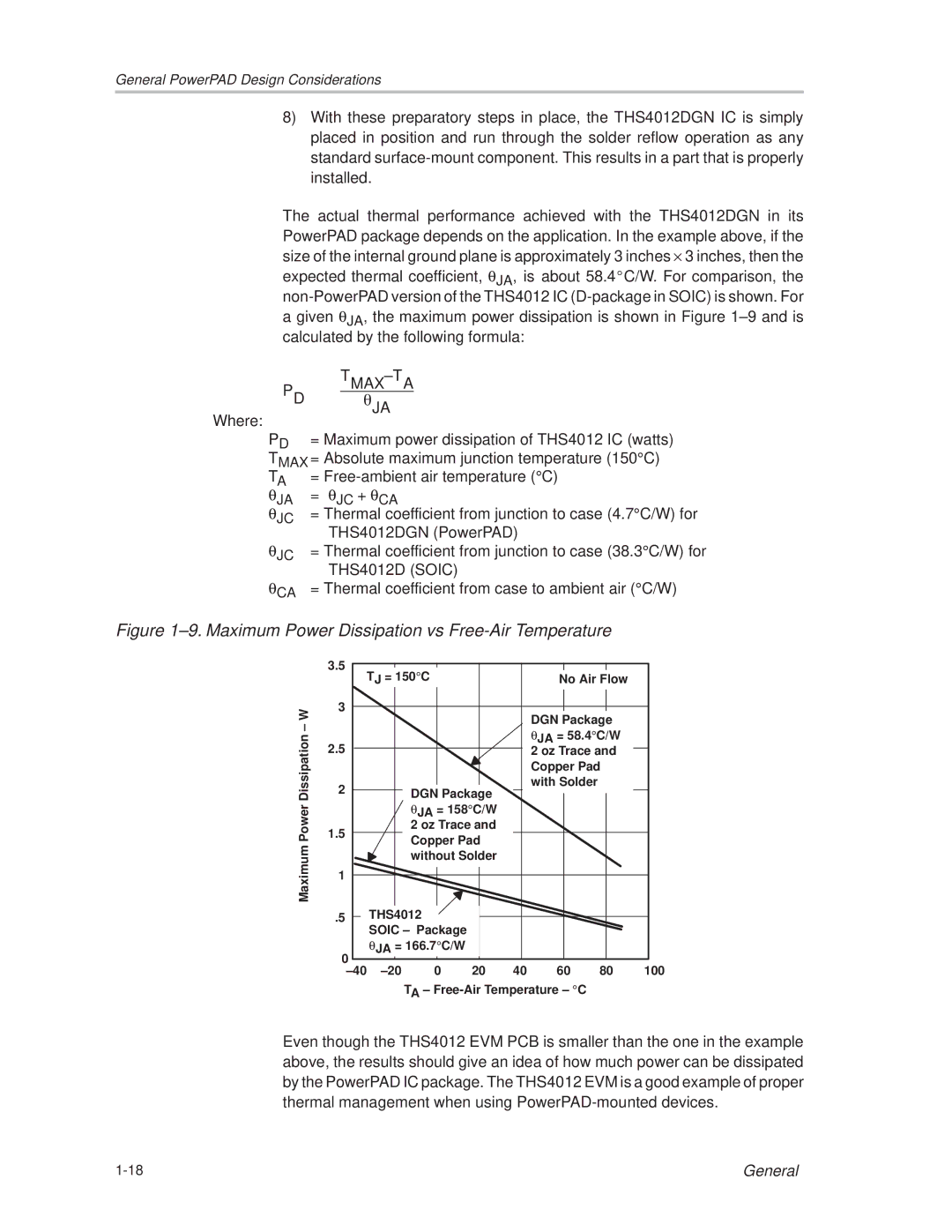THS4012 specifications
The Texas Instruments THS4012 is a high-performance, dual-channel operational amplifier designed for a wide variety of applications requiring high speed and precision. This op-amp is particularly appreciated in the fields of signal processing, data acquisition, and instrumentation, thanks to its exceptional characteristics and innovative technologies.One of the standout features of the THS4012 is its ultra-low input noise and high slew rate, which make it a compelling choice for applications that demand rapid response times without signal distortion. With a slew rate of up to 1200 V/µs, the THS4012 can handle rapid changes in input signals, making it ideal for high-frequency applications such as analog-to-digital converters and RF signal processing.
In terms of performance, the THS4012 boasts a wide bandwidth of approximately 100 MHz at a gain of 1, ensuring it can efficiently transmit fast signals without significant loss. The part also provides a high common-mode rejection ratio (CMRR) and power supply rejection ratio (PSRR), enhancing its stability in environments with fluctuating power supply conditions or varying signal levels.
Another important aspect of the THS4012 is its low total harmonic distortion (THD), which is crucial for high-fidelity applications. By minimizing distortions, it ensures that the output signal closely matches the input signal, preserving the integrity of the original waveform. This makes it especially suitable for audio applications and precision data acquisition systems.
The THS4012 operates on a single or dual power supply, with a voltage range from ±2.5 V to ±6 V, providing designers with the flexibility to integrate this op-amp into various circuit configurations. The device is available in compact packages, making it suitable for space-constrained designs in portable electronics.
Additionally, the THS4012 incorporates innovative features such as internal compensation, which simplifies the design process by reducing the need for external components. This enhances design efficiency and reliability, allowing engineers to focus on other critical aspects of their circuits.
In conclusion, the Texas Instruments THS4012 dual operational amplifier combines high-speed performance, low distortion, and flexible power supply options, making it a popular choice for engineers looking to enhance the capabilities of their electronic systems. Its advanced technologies and characteristics render it a strong option in a myriad of applications within today's demanding electronic landscape.

